3 simple ways to treat numbness of the feet and toes
- If you don't do the following 12 things, you will definitely feel regretful all your life!
- 10 simple first aid tips but 90% of people still do wrong
- New discovery: 5 personality types that can "extend life expectancy"
Numbness in the limbs is a common disease in many different ages and occupations. Although it is not dangerous to life, if prolonged, it will cause complications such as muscle atrophy, paralysis, difficulty walking, affecting daily life. Let us refer to 3 simple ways to treat numbness of the feet and toes in the following article!
Numbness in the feet and toes can be caused by a variety of causes and is often accompanied by a needle-like feeling. Foot numbness can be as simple as your feet going to " sleep " or more serious like diabetes or multiple sclerosis. The treatment of foot and toe numbness is essential because it affects not only walking ability but also a symptom of a more serious condition. When you encounter this disease, especially when they occur abnormally or often, you need to pay attention to find out the cause and how to fix it early, to avoid possible complications.
Method 1: Treatment of numb symptoms occurs occasionally
1. Advocate
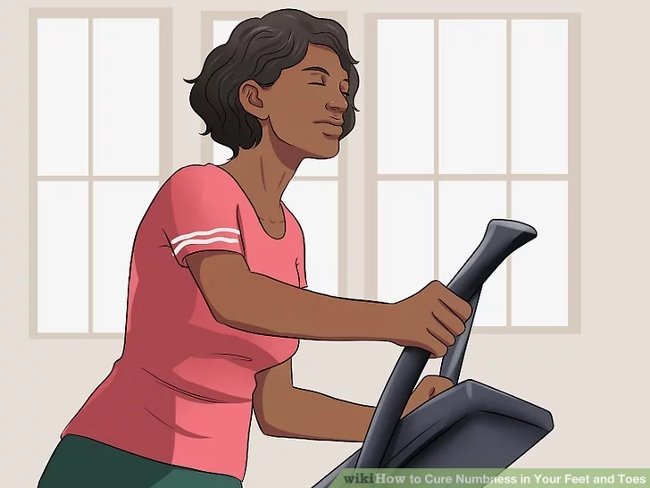 3 simple ways to treat numbness of the feet and toes Picture 1
3 simple ways to treat numbness of the feet and toes Picture 1
Numbness in the feet or toes usually occurs when sitting or standing for a long time. The best way to cure this condition is to stimulate blood circulation in your feet by moving . Try to get up a few steps or just swing your feet as you sit.
- In addition to getting out of numbness, regular exercise also helps prevent numbness in the feet or feet from the beginning. Try to put physical activity into your daily schedule, even if it's just a short walk.
- Exercises that affect your feet like running can numb your feet and toes in some people, so try lower-impact exercises like swimming or cycling .
- Remember to stretch your muscles thoroughly before exercising, wear appropriate sports shoes and practice on a flat surface.
See also: Why should you practice yoga today?
2. Change sitting posture
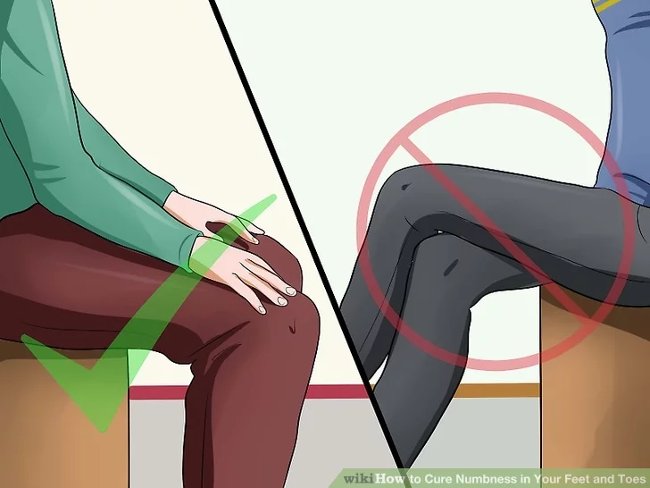 3 simple ways to treat numbness of the feet and toes Picture 2
3 simple ways to treat numbness of the feet and toes Picture 2
The phenomenon of foot numbness usually occurs due to sitting in the posture of pressing nerves in the legs and / or feet. Therefore, avoid sitting on your feet or sitting cross-legged for long periods of time.If you have to sit for a long time, occasionally raise your legs to help increase blood circulation .
3. Remove tight clothing
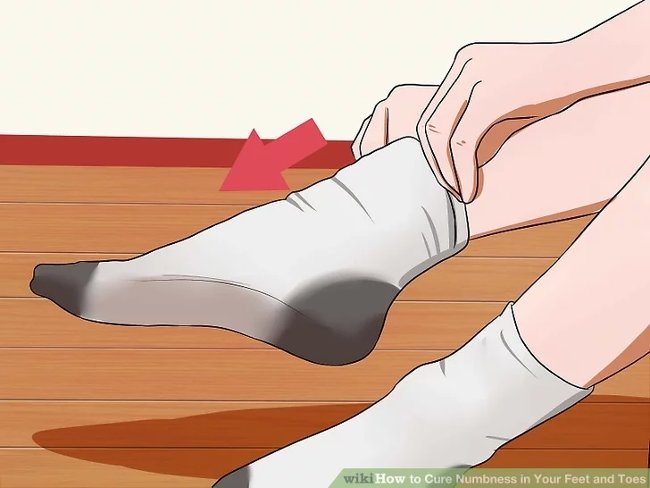 3 simple ways to treat numbness of the feet and toes Picture 3
3 simple ways to treat numbness of the feet and toes Picture 3
Underwear, socks or tight clothing on the lower half of the body can interfere with blood circulation to the feet and anesthesia. Remove or loosen the dress and these accessories help blood flow better.
4. Massage the foot
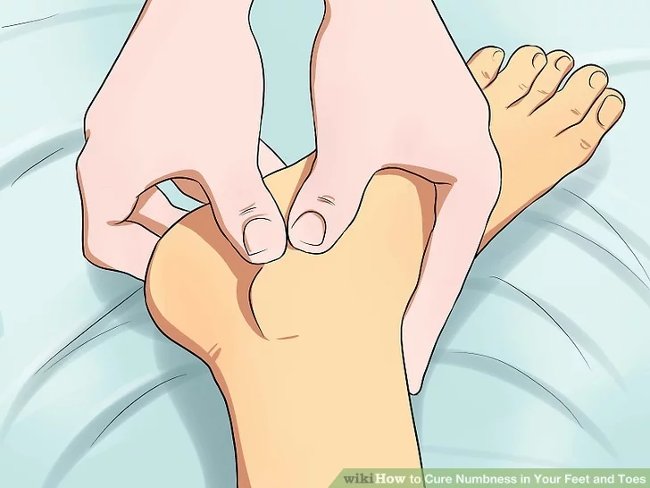 3 simple ways to treat numbness of the feet and toes Picture 4
3 simple ways to treat numbness of the feet and toes Picture 4
Gently massage numb feet to increase blood circulation and reduce numbness more quickly.
5. Warm up your feet with a warm blanket or heat pack
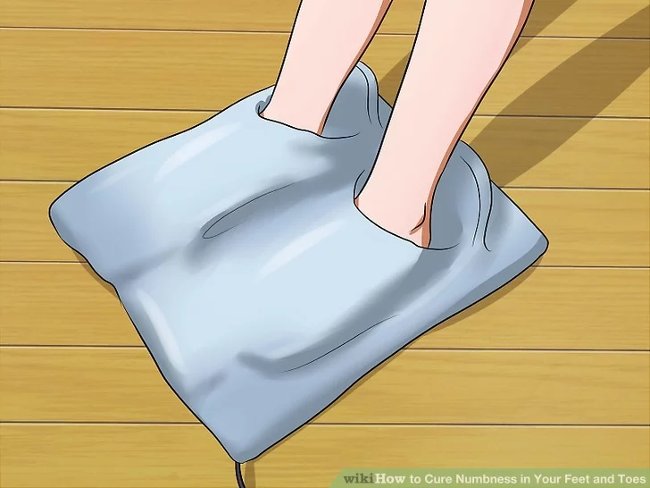 3 simple ways to treat numbness of the feet and toes Picture 5
3 simple ways to treat numbness of the feet and toes Picture 5
Exposure to low temperatures can cause anesthesia and a prickling sensation in the feet or toes.Heating your feet can help your feet or toes become numb.
6. Choose appropriate shoes
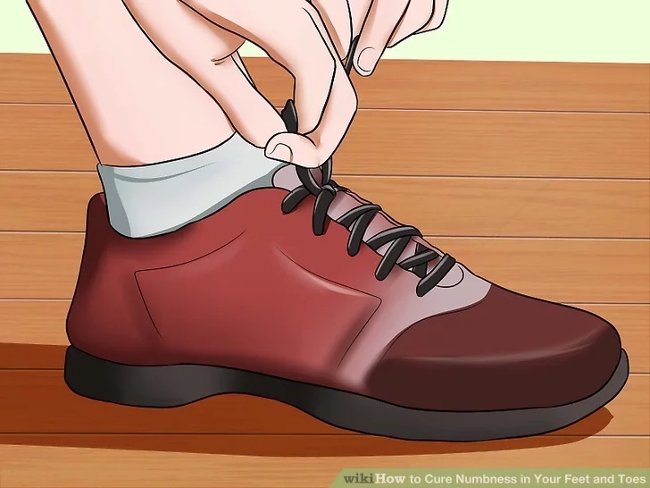 3 simple ways to treat numbness of the feet and toes Picture 6
3 simple ways to treat numbness of the feet and toes Picture 6
High heels or shoes that squeeze your toes can be numb. You may also feel numbness when wearing shoes is too tight, especially when exercising. So choose comfortable and medium size shoes for your feet . Shoe soles can make shoes more comfortable and comfortable.
7. Know when to go to a doctor
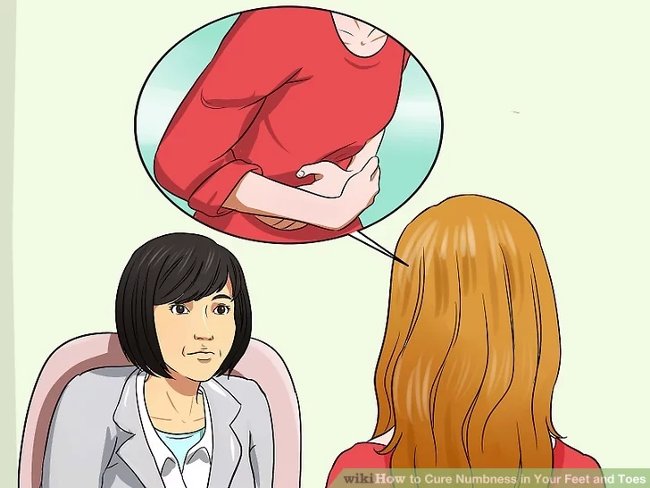 3 simple ways to treat numbness of the feet and toes Picture 7
3 simple ways to treat numbness of the feet and toes Picture 7
Occasional occlusion of the feet and toes is often not serious, especially when there are obvious causes such as uncomfortable sitting posture or tight clothing. However, if numbness or numbness is frequent for more than a few minutes, you should go to your doctor to eliminate other potential causes.
- Call for emergency help if foot numbness is accompanied by symptoms such as weakness, paralysis, loss of urination control or defecation, tongue twister.
- Pregnancy often causes swelling of the feet and toes, which can cause anesthesia. If your doctor thinks that the numbness of your feet and toes is due to pregnancy and not any other disease, follow your doctor's advice to reduce foot numbness.
Method 2: Handle diabetes-related numbness
1. Seek a diagnosis to be diagnosed
 3 simple ways to treat numbness of the feet and toes Picture 8
3 simple ways to treat numbness of the feet and toes Picture 8
Diabetes is the most common cause of chronic numbness in the feet and toes. Numbness symptoms are caused by damaged nerves and poor blood flow to the feet. Numbness is often one of the symptoms of diabetes. Talk to your doctor and get tested right away if you have numbness often without a cause.
- Foot numbness can be extremely dangerous for diabetics, as it can make them feel no pain in their feet due to burns, stabbing or blistering.
- Poor blood circulation also means that the patient's legs will heal longer, so infection is a very worrying condition. Therefore, careful care of your feet is extremely important when you have diabetes.
2. Control diabetes
 3 simple ways to treat numbness of the feet and toes Picture 9
3 simple ways to treat numbness of the feet and toes Picture 9
Regular blood glucose testing is the best way to prevent blood and nerve circulation problems, both of which can cause anesthesia when diabetic. You need to work with your doctor to make an appropriate treatment plan.
- Regular blood sugar testing with a blood glucose meter and testing the A1C level several times a year.
- Although foot pain and other symptoms of diabetes can make it difficult to exercise, you should still be active . Try to exercise for at least 30 minutes a day, regardless of the gym or walking up and down stairs at home.
- Apply a healthy and balanced diet with fruits, vegetables, whole grains, beans, fish and low-fat milk. Try to avoid blood sugar-boosting foods like cakes and soda.
- Use enough medication prescribed by your doctor, including insulin.
- Smoking can make diabetes symptoms worse, so consult your doctor on how to quit smoking quickly and effectively.
See also: If your body has these 12 signs, you are eating too much sugar!
3. Lose weight
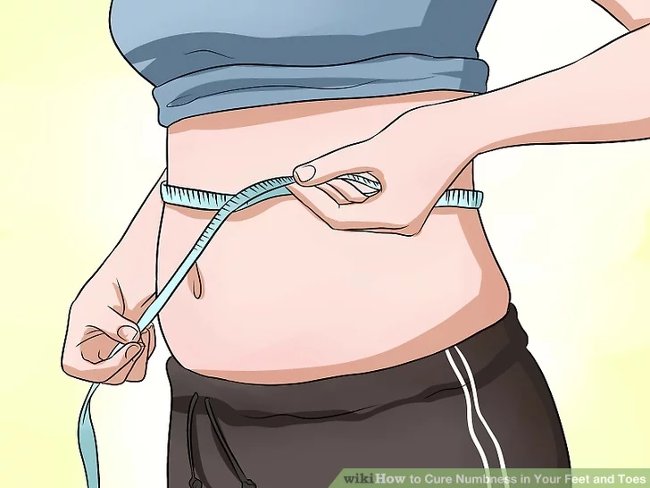 3 simple ways to treat numbness of the feet and toes Picture 10
3 simple ways to treat numbness of the feet and toes Picture 10
Being overweight and obese can contribute to numbness in the feet and toes, so ask your doctor about safe weight loss to alleviate the symptoms.
- Losing weight helps lower blood pressure and reduces numbness. If losing weight is not enough to control your blood pressure, talk to your doctor about taking medication.
See also: The secret to keeping the body slender thanks to the diet of Japanese women
4. Use foot care products exclusively for diabetics
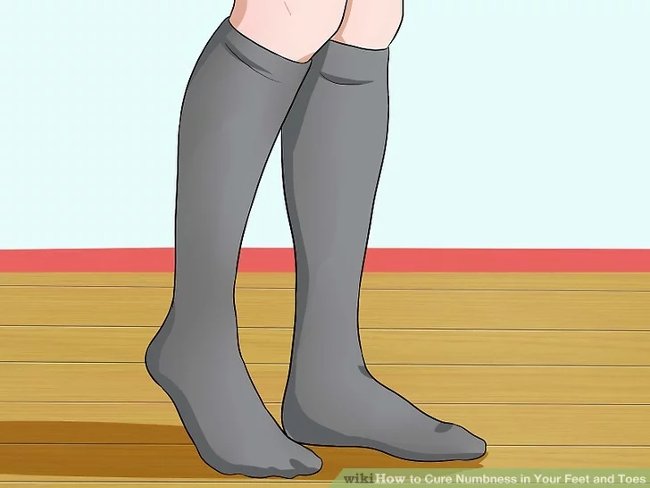 3 simple ways to treat numbness of the feet and toes Picture 11
3 simple ways to treat numbness of the feet and toes Picture 11
All pressure helps stimulate blood circulation, thereby reducing numbness in the feet or toes. Special creams containing capsaicin may also help reduce numbness.
5. Applying measures to reduce numbness sometimes occurs
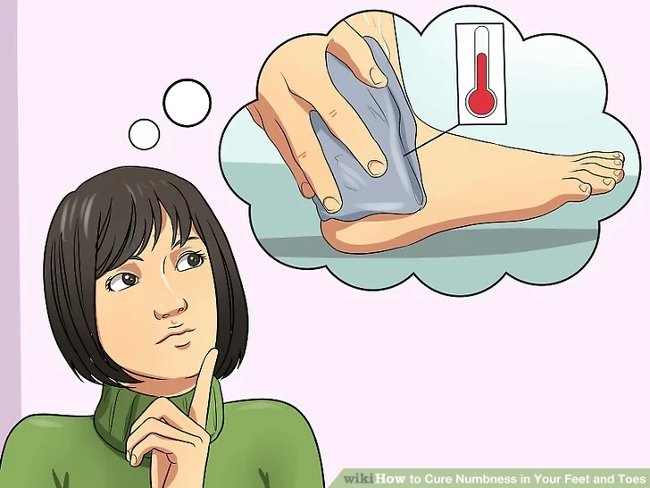 3 simple ways to treat numbness of the feet and toes Picture 12
3 simple ways to treat numbness of the feet and toes Picture 12
If you have diabetes, you can use numbness methods such as foot movement, elevating your feet, massaging your feet and using warm compresses. These methods may help reduce these symptoms temporarily, but remember they don't cure the underlying disease, so you still need to pay attention to controlling diabetes and foot care.
6. Refer to alternative therapies
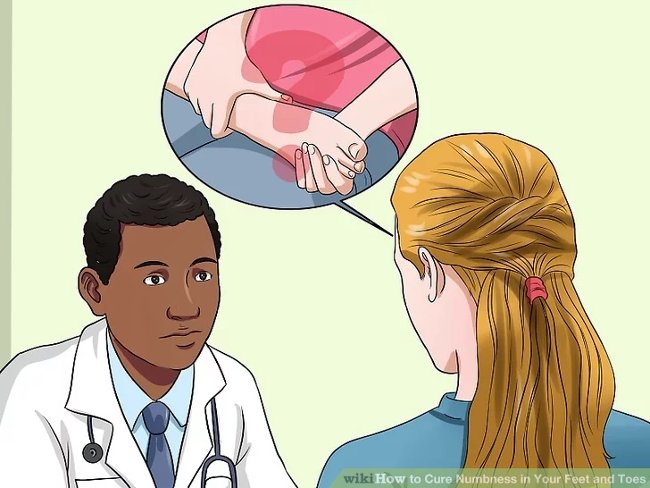 3 simple ways to treat numbness of the feet and toes Picture 13
3 simple ways to treat numbness of the feet and toes Picture 13
Some studies show the benefits of relaxation therapy, biofeedback and analgesic therapy in treating diabetes-related numbness. These treatments may not be covered by insurance, but are worth a try if other therapies do not work. In addition, your doctor may prescribe medication to treat numbness, usually a medication that is not instructive.
Method 3: Handle chronic numbness due to other conditions
1. Treatment of injury
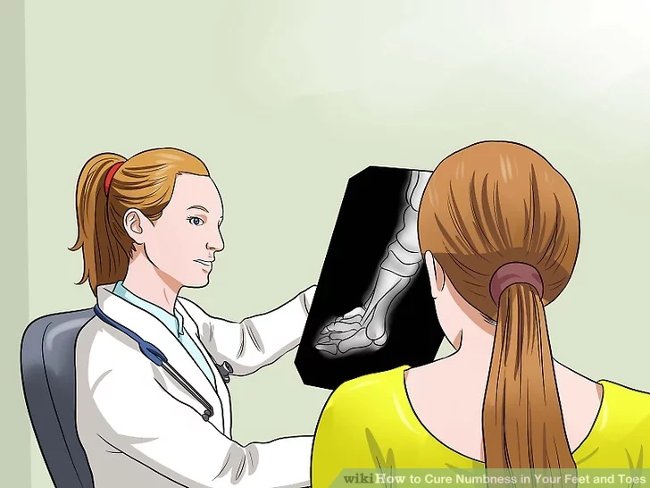 3 simple ways to treat numbness of the feet and toes Picture 14
3 simple ways to treat numbness of the feet and toes Picture 14
Injuries to the feet, toes, ankles, head or spine can cause numbness . Orthopedic trauma specialists, neurologists, or osteoarthritis specialists can treat trauma to help relieve numb symptoms.
2. Talk to your doctor about medicines
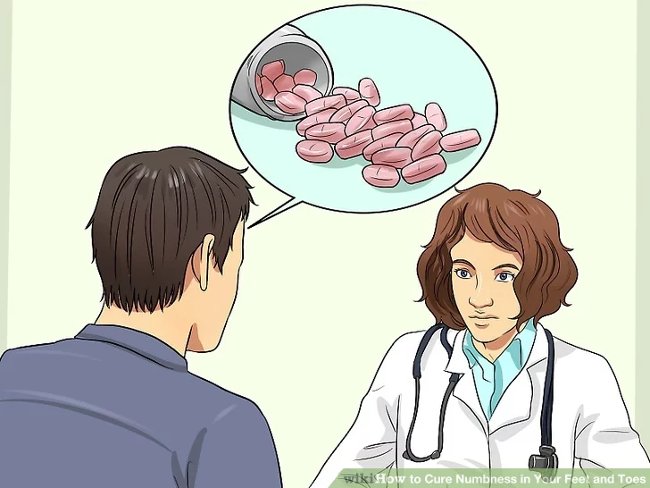 3 simple ways to treat numbness of the feet and toes Picture 15
3 simple ways to treat numbness of the feet and toes Picture 15
Chemotherapy drugs, as well as many prescription drugs treat many other diseases that can cause anesthesia in the limbs. If you begin to feel numb when taking another medicine, talk to your doctor to determine if the benefits are greater than the side effects , if there is no other medication to treat your illness but not have similar side effects.
- Do not stop taking the drug without consulting your doctor, need to reduce the dose gradually for some drugs.
3. Drink vitamin supplements
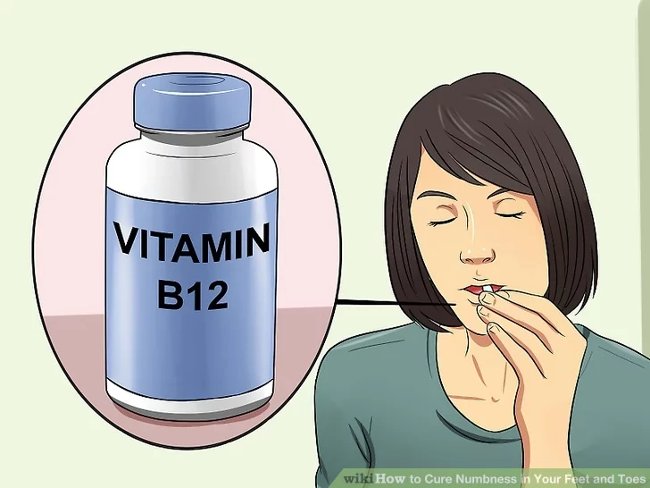 3 simple ways to treat numbness of the feet and toes Picture 16
3 simple ways to treat numbness of the feet and toes Picture 16
A lack of vitamin B12 or other vitamins may cause numbness. You can take a blood test to find out about your vitamin deficiencies and start taking the recommended vitamin supplements .
4. Take medicine to treat chronic diseases
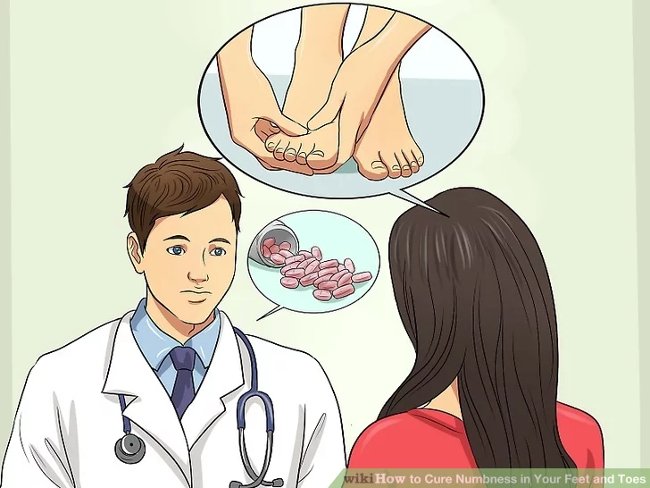 3 simple ways to treat numbness of the feet and toes Picture 17
3 simple ways to treat numbness of the feet and toes Picture 17
Prolonged numbness of the feet and toes can be a symptom of some underlying disease , including multiple sclerosis, arthritis, Lyme disease and many other diseases. Taking medications to treat underlying conditions can help reduce foot numbness.
- If a chronic disease has not been diagnosed, numbness of the feet and toes may be the first sign. Remember to tell your doctor about any symptoms that occur so they know which tests to do.
- If you have been diagnosed with a disease, but numbness is a new symptom, you need to let your doctor know in the next visit for additional medication or other treatments.
5. Reduce drinking alcohol
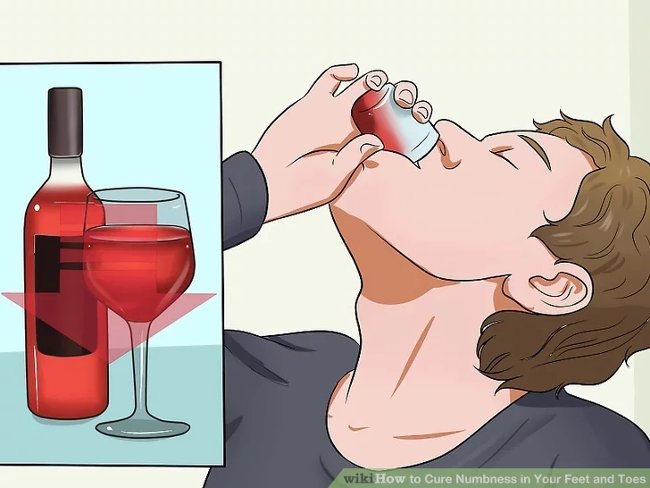 3 simple ways to treat numbness of the feet and toes Picture 18
3 simple ways to treat numbness of the feet and toes Picture 18
High alcohol content can cause numbness in the limbs, including feet and toes. Reducing the amount of alcohol added to your body helps prevent numbness.
6. Symptomatic treatment
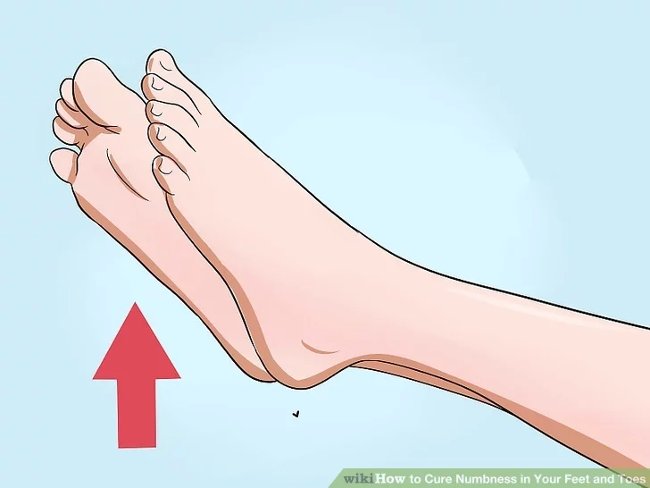 3 simple ways to treat numbness of the feet and toes Picture 19
3 simple ways to treat numbness of the feet and toes Picture 19
If you take all steps to treat the underlying causes of your numbness but are still not relieved, try following these steps to reduce numbness. While these methods do not cure the disease, elevating your feet, using warm compresses, foot massage and exercise can temporarily relieve symptoms.
See also: 7 warning signs your body is "calling for help"
Having fun!
You should read it
- What does the foot reveal about your health?
- How to treat some diseases of the feet
- Cold feet can cause disease? Effective way to keep your feet warm
- 9 abnormal signs in the legs warning the body is having health problems
- What is the effect of soaking feet with the leaves? The most effective way to soak your feet with the leaves
- Quiz: How many meters is 1 feet?
- The unbelievable truth: Dog feet have an attractive smell of popcorn
- Notes with foot soak treatment
- How to treat blisters when walking a lot, wearing tight shoes
- Found the 17th leg drifting on the coast of Columbia, there has been a solution to mystery over the past decade
- Thick skin on the palms, soles of the feet may be related to esophageal cancer
- Beautiful Feet Cabin 18+ Game, this is the game genre for players!
May be interested

Why does modern Japan still use squat toilets?

17 types of food can be eaten at any time without quantity restrictions

3 simple ways to curb anxiety with natural food

After coughing and sneezing, bacteria can survive in the air for up to 45 minutes

8 great benefits of coconut water you may not know yet

10 simple exercises that help improve posture at home






 What does the foot reveal about your health?
What does the foot reveal about your health? The unexpected truth about the forefinger was longer than the big toe
The unexpected truth about the forefinger was longer than the big toe How to treat some diseases of the feet
How to treat some diseases of the feet How to treat blackheads at home
How to treat blackheads at home How to cure tongue burns after eating hot food
How to cure tongue burns after eating hot food Treat cracked heels in 3 super simple and effective ways
Treat cracked heels in 3 super simple and effective ways